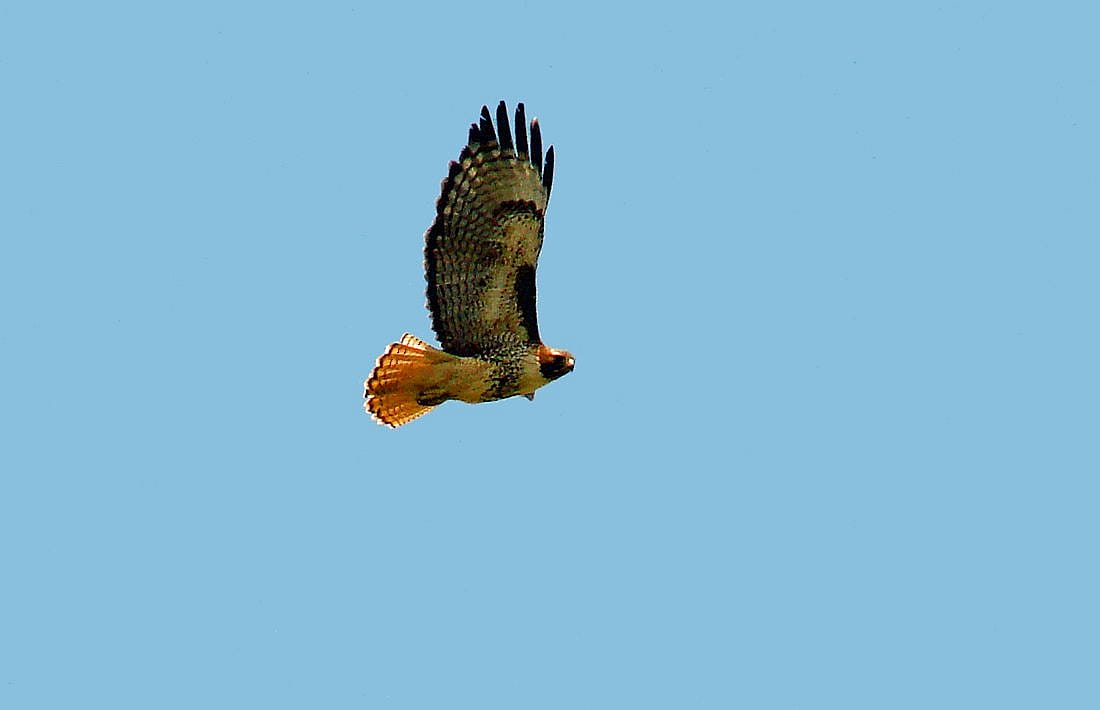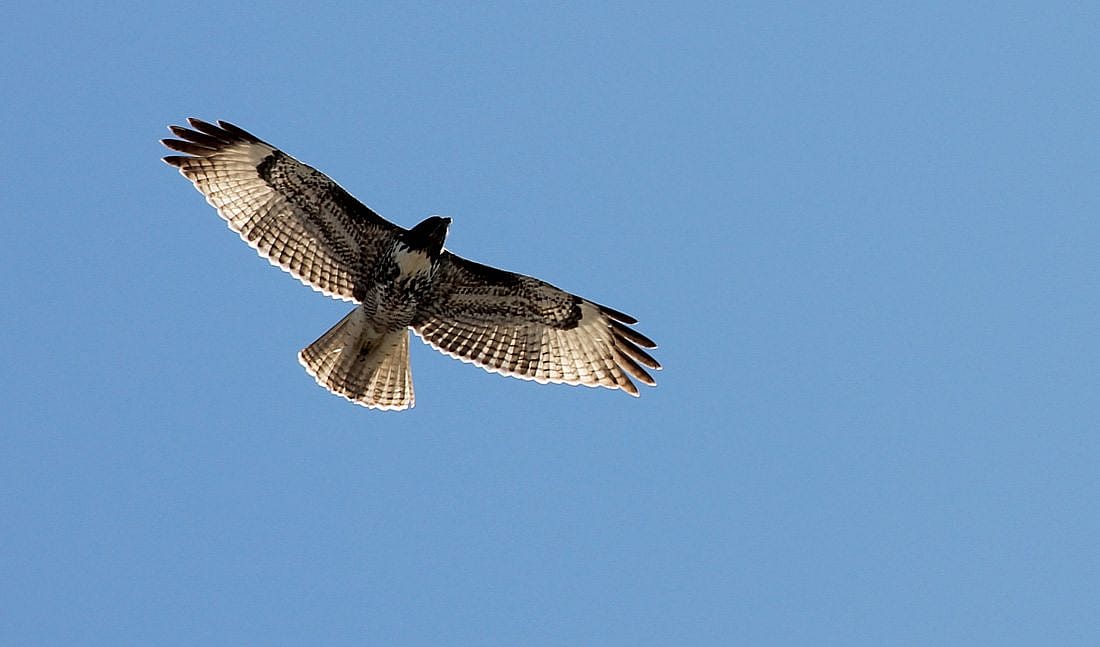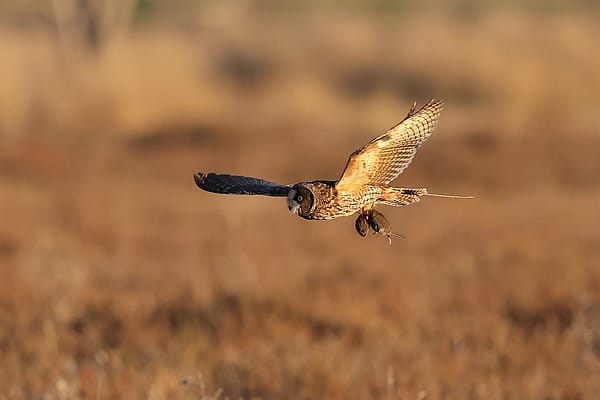
The Red-tailed Hawk: Why Are They So Common?
Red-tailed Hawks are the most common soaring hawk in North America. Yet you may have one living near you and not even recognize it as a Red-tailed Hawk. This is because not only are they very common, they are also one of the most widely varied raptors in coloration. They range from albino to almost black, and have regional color differences as well. To complicate this even further, sometimes their most common characteristics, such as their red tails, may be absent. The Red-tail that breeds in Alaska and northwestern Canada, then winters on the southern Great Plains, is a very dark form of the Red-tailed Hawk, called the Harlan’s Hawk. The Harlan’s Hawk has a marbled white, brown, and gray tail instead of a red one.

The tails of juvenile and immature Red-tailed Hawks are brown and banded. They do not get the red color until they are in their second year, and even then some adults maintain multiple banding on their tails.
Belly bands – a line of darker feathers placed horizontally across the pale chest – are often mentioned as a key tool for distinguishing Red-tailed Hawks in bird identification books, but they are not always present.
The other common identification is a mark similar to a “dash” and “comma” on the leading edge of the wings. Sometimes however, this is so pale or against such a dark background that it is difficult to see, and of course with albinos it is completely missing.

Part of the reason Red-tailed Hawks are so common is that they can live in a wide variety of habitats, including both rural and urban areas, from high in the mountains to sea-level. The Audubon Society recently posted an article (http://www.audubon.org/news/fearless-and-well-fed-new-york-citys-red-tailed-hawks-are-flourishing) that reported there are at least 20 Red-tailed Hawk nests in Manhattan.
In rural areas where they prefer open country, they may be found in natural environments from meadows to forest edges, deserts, grasslands, crop lands, mountains, marshes, valleys, and canyons. They can also be found in woodlands that contain scattered open areas. Within these habitats their needs consist of a few high perches – such as power line poles, tall cacti, trees, and cliffs to watch for prey from – nesting areas in tall trees, saguaro cacti, or cliffs, and ample prey. Although habitat alteration is a major reason for the decline of many bird species, Red-tails may actually benefit from some habitat destruction. In areas where fires and logging have opened up previously wooded habitats, pushing out forest dwelling birds such as Red-shouldered Hawks, and Saw-whet Owls, the Red-tailed Hawk population will often increase. This is because the fragmented forest creates good hunting grounds for Red-tails.
Another reason this species is so common has to do with what they eat. The diet of Red-tailed Hawks is highly varied and adaptable to what is most commonly found within their habitat. They frequently dine on small to medium sized mammals such as mice, voles, ground squirrel, rabbits, and hares, but they will also prey on birds such as pheasants, as well as reptiles (mainly snakes, including rattlesnakes), and amphibians. They may also occasionally eat fresh carrion. Whatever is locally abundant is what they settle on to hunt. In New York, rats and pigeons makes a perfect meal for the Red-tail. In parts of the southwestern United States, where huge numbers of bats emerge from caves after sunset, Red-tails will snatch them in mid-air. On Soccoro Island, Mexico, land crabs are their primary prey. They have even been known to dine on frogs, toads, and at times on large insects. So being an opportunist, the Red-tail hawk adapts its diet to the season, the habitat they are residing in, and the changing environment around them.

Being a generalist capable of living in almost every open or partially open habitat, and feeding on almost any small- to medium-sized prey, makes the Red-tailed Hawk the most common hawk you are likely to see in North America. So keep a lookout for Red-tailed Hawks. You will frequently see them soaring over the landscape or perched on power poles along the highway watching for prey.
Photo Credits:
Harlan’s Hawk, Attribution, NonCommercial License, Pat Gaines, https://www.flickr.com/photos/patgaines
Isham’s tail, from the Draper Museum Raptor Experience’s FaceBook page, https://www.facebook.com/DraperMuseumRaptorExperience
Perched Immature Red-tailed Hawk, and Rufus Morph by Jerry McFaarland, Attribution NonCommercial License, https://www.flickr.com/photos/56509109@N04/
Red-tailed Hawk in flight without a red colored tail by Jon. D. Anderson, NonCommercial, Attribution No Derivatives License, https://www.flickr.com/photos/jon_d_anderson/
Red-tailed Hawk perched in a tree in an urban environment, Jean & Oliver, NonCommercial, Attribution No Derivatives License, https://www.flickr.com/photos/ok-oyot/
Red-tailed Hawk with rabbit by Rhys Asplundh, Attribution License, https://www.flickr.com/photos/rhysasplundh/
Red-tailed Hawk on a city sidewalk, Attribution License, Eden, Janine, and Jim, https://www.flickr.com/photos/edenpicture/
Written By
Anne Hay
Anne Hay has a Bachelor's degree in Elementary Education and a Master's in Computers in Education. She spent most of her working years teaching third grade at Livingston School in Cody, Wyoming. After retiring she began doing a variety of volunteer work for the Buffalo Bill Center of the West’s Draper Natural History Museum. Anne loves nature and has a concern for the environment. She believes that educating the public, so that they will have a better understanding and appreciation for the natural world, is very important. Because of this belief, volunteering at the Center is a perfect fit. She spends time in the Draper Lab, observing eagle nests for Dr. Charles Preston’s long-term research project on nesting golden eagles, writing observation reports of raptor sightings in the Bighorn Basin, and working with the Draper Museum Raptor Experience. Anne states that, “Having a bird on my glove, is one of my all time favorite things in life.”
















